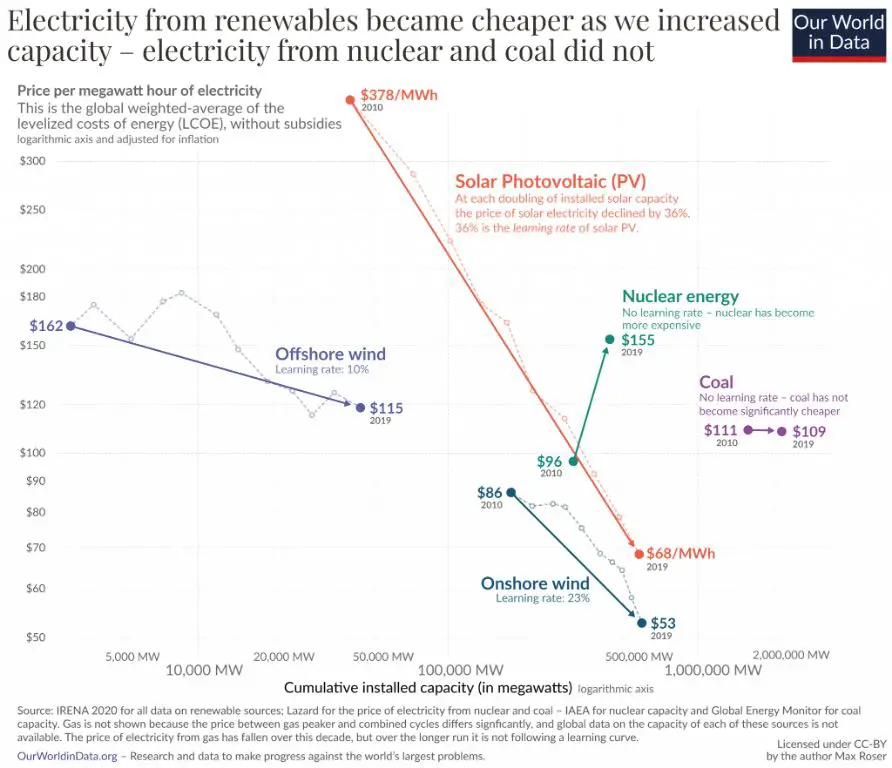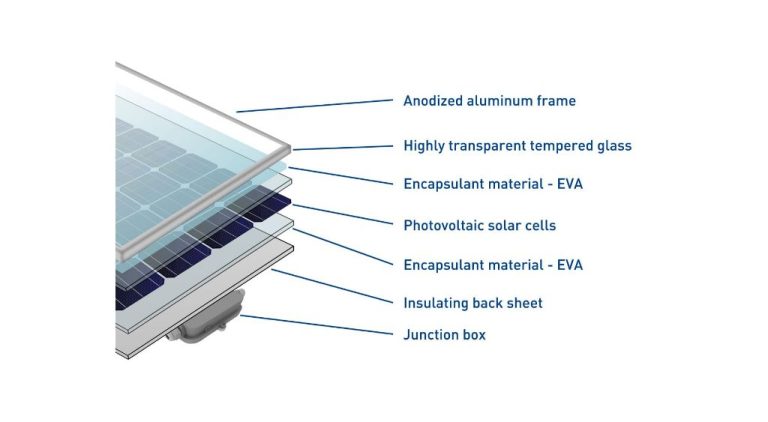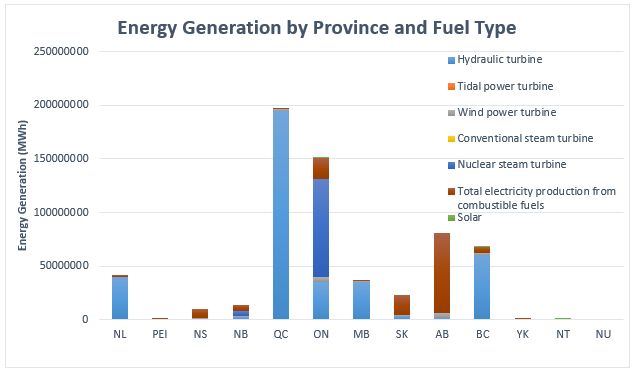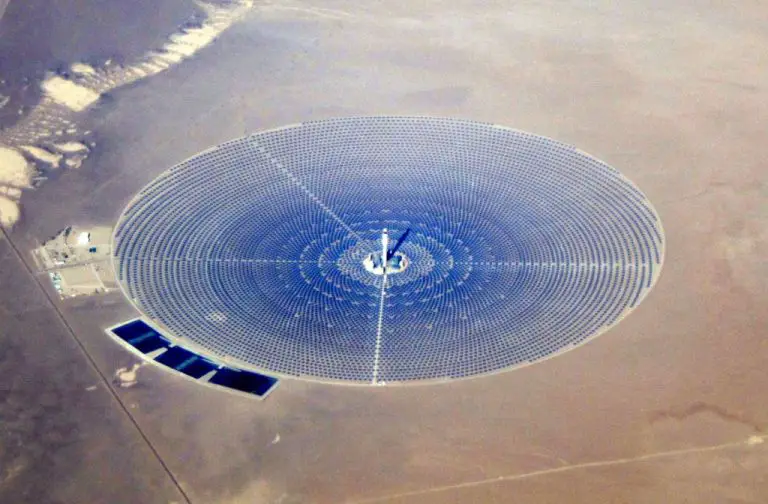Is Solar Energy A Good Replacement For Fossil Fuels?
With growing concern over climate change and the environmental impacts of burning fossil fuels, there has been increasing interest in renewable energy sources like solar power. Solar energy offers a clean alternative to coal, oil, and natural gas, which generate large amounts of greenhouse gas emissions. However, while solar power has grown dramatically in recent years, it still only accounts for a small fraction of global energy consumption. For solar to fully replace fossil fuels as a primary energy source, it still needs to overcome some technical and economic challenges.
This article examines the prospects of solar energy replacing fossil fuels in the coming decades. While solar has clear environmental benefits, there are still issues of intermittency, storage, and cost that limit how much solar can scale up. But with the cost of solar declining rapidly and new advances that could resolve intermittency and storage, solar has the potential to be a major and perhaps dominant energy source this century if challenges are overcome. It remains to be seen whether political will and technological development will align to enable this clean energy transition away from fossil fuels and towards solar.
Rising Demand for Renewable Energy
There has been a major push in recent years to transition from fossil fuels to renewable energy sources. This is being driven by concerns over climate change and the need to reduce greenhouse gas emissions. Many governments have implemented policies to encourage the adoption of renewables through incentives like tax credits and feed-in tariffs. There are also an increasing number of major corporations that have made commitments to source all or most of their energy from renewables by a target date.
The Paris Climate Agreement in 2015 catalyzed global action, with nearly 200 countries pledging to limit global warming. This has put pressure on nations and companies to dramatically cut their carbon footprints. Many experts believe the only way to achieve these climate goals is through a rapid transition to renewable energy sources like solar, wind and geothermal.
Government renewable energy policies often include tax credits, rebates or other financial incentives for households and businesses that install solar panels or wind turbines. Many places have also implemented renewable portfolio standards that require utilities to source a mandated percentage of power from renewables. Countries like Germany, China and the U.S. are among the leaders in installed capacity of solar energy.
Major corporations have also made bold commitments to climate action and clean energy. As of 2019, over 230 Fortune 500 companies had renewable energy or climate targets, up from just over 100 in 2015. Companies like Google, Apple, Amazon and Microsoft have pledged to power their operations completely with renewables in the coming years. This is being driven both by environmental concerns and economic benefits, as prices for renewables drop below fossil fuels.
Advantages of Solar Power
Solar energy has several notable advantages that make it an appealing renewable energy source. First, solar energy comes from the sun, which is an abundant and renewable resource. The amount of solar energy that reaches the Earth’s surface every hour is greater than the total energy consumption of the world’s population in a year. This makes solar a sustainable long-term energy solution.
Second, solar power generation produces significantly lower carbon emissions compared to fossil fuel sources. Solar panels produce electricity without any direct emissions during operation. The carbon emissions from solar energy come indirectly through manufacturing and installation, but still amount to far less emissions than coal, oil or natural gas. As solar continues to grow as part of the energy mix, it can help reduce overall carbon emissions.
Lastly, solar power is highly scalable and flexible. Solar projects can range from small-scale residential systems to large utility-scale solar farms. This allows solar technology to be deployed in many settings and customized for local needs. The modular nature of solar panels also allows capacity to be added gradually over time.
Disadvantages of Solar Power
While solar power offers many benefits, it also comes with some downsides that have hindered more widespread adoption. One major disadvantage is that solar energy currently has higher upfront costs compared to fossil fuel plants. The solar panels, inverters, wiring, land acquisition, installation labor and permitting costs can be expensive. This is especially true for large utility-scale solar farms.
Another disadvantage is that solar generation is intermittent – solar panels only produce energy when the sun is shining. This can lead to issues with electricity supply and grid stability, especially in areas with high solar penetration. To address this problem, energy storage solutions are needed to capture excess solar power during the daytime and discharge it when the sun goes down. However, large-scale storage adds even more costs.
In addition, solar power requires a lot of land area, particularly for utility-scale projects. Thousands of acres may be needed for large solar farms to produce hundreds of megawatts. This can be an issue in densely populated regions where sufficient open land is not available near energy demand centers. Careful siting analyses are required to find suitable locations.
Falling Costs
The cost of solar panels and installation has dropped dramatically over the past decade. According to industry experts, prices have fallen by around 90% since 2010 due to economies of scale, improvements in manufacturing, and increased module efficiency.
In 2010, a typical 6kW residential solar system cost around $35,000. Today, that same system can be purchased for $10,000 or less. Utility-scale solar farms have seen even greater price declines of over 70% during this period.

Continued technology improvements and process innovation are expected to drive costs down further. Emerging techniques like perovskite solar cells and organic photovoltaics have the potential to slash manufacturing costs and make solar even more affordable.
With costs projected to fall an additional 40% by 2040, solar power is becoming increasingly competitive with fossil fuel energy sources. The precipitous drop in prices over the last decade shows that the technology still has room for significant improvement.
Energy Storage Developments
For solar power to become a major source of electricity, improved energy storage solutions are needed to address the intermittent availability of sunlight. Promising advancements in storage technologies are emerging to overcome this barrier.
Lithium-ion batteries continue to gain better energy densities, faster charging capabilities, longer lifespans, and lower costs. New battery chemistries like lithium-sulfur and zinc-air have the potential to significantly outperform today’s lithium-ion batteries once commercialized. Beyond batteries, alternative storage methods are being developed such as compressed air energy storage which uses excess electricity to compress air in underground caverns during the day, then release it to generate power at night.
These ongoing improvements in energy storage stand to enable solar power to dispatch electricity day or night. With storage capacities rising and costs declining, solar has the potential to serve as a firm source of renewable power.
Projections for Future Growth
Many analysts project that solar power will continue to grow significantly and account for an increasing share of global electricity generation in the coming decades. According to the International Energy Agency, the share of solar PV in global power generation could reach 20% by 2030 and as much as 45% by 2050 in their accelerated solar PV case. Under this scenario, solar would become the largest source of electricity by mid-century.
The declining costs of solar power, along with improving energy storage technology, make these aggressive growth projections achievable. With the right supportive policies and grid integration investments, solar could expand from providing just 2% of global electricity today to potentially dominating worldwide generation within 30 years.
Several long-term energy models predict solar will become the most significant part of the global energy mix. Analysts highlight the incredible scalability of solar, allowing distributed generation that can expand exponentially worldwide. With solar already among the cheapest sources of new electricity in most major markets, it is positioned for dramatic growth if challenges around intermittency and grid integration can be overcome.
Potential to Replace Fossil Fuels
Solar power has the potential to replace fossil fuels as a dominant energy source globally. With continuing cost declines and efficiency improvements, solar photovoltaics have become cost-competitive with fossil fuels for electricity generation in many parts of the world. Concentrated solar power plants can provide dispatchable, baseload power. The plummeting price of battery storage can enable solar energy to be available 24/7. This makes solar a viable candidate for meeting the world’s growing appetite for electricity in a scalable and sustainable way.
However, for solar to truly replace fossil fuels and meet a substantial share of the world’s energy demand, further infrastructure and supportive policies are needed. Massive buildouts of solar generation capacity, energy storage, and high-voltage transmission lines are required. Market incentives, financing mechanisms, and regulations to enable the transition to solar while ensuring grid reliability will be crucial. With coordinated efforts on infrastructure, technology innovation, and policy, solar energy could feasibly scale up over the next few decades to become the world’s dominant electricity source, displacing fossil fuels. But the transition will require substantial and sustained commitment.
Challenges to Widespread Adoption
While solar power holds great potential as a renewable energy source, there remain some key challenges to reaching widespread adoption. One major barrier is the still high upfront costs associated with solar panel installation for many homeowners and businesses. Even as prices have dropped dramatically, the large initial investment required can deter consumers, especially when faced with other cheaper energy options. This is particularly true in regions with low electricity rates.
Another obstacle is the regional variability in the quality of the solar resource. Solar power works best in areas that receive high amounts of direct sunlight throughout the year. Some northern regions see much less sun during the winter months, reducing solar output at times when electricity demand is highest. Areas prone to heavy cloud cover or storms can also experience inconsistent solar power generation. So the underlying solar resource may be insufficient in some locations to meet all energy needs.
Conclusion
The evidence presented in this article demonstrates that solar energy has the potential to replace fossil fuels, but this transition still faces notable challenges. While costs are falling and technology is improving, solar’s intermittent output remains an obstacle. Several solutions show promise for overcoming solar’s reliability issues, including energy storage, smart grids, and hybrid systems. But these require further development before solar can reach very high penetrations. Though solar may not completely replace all uses of fossil fuels yet, it has emerged as a major player in the global shift to clean energy. With continued innovation, supportive policies, and public/private investment, solar is poised to displace substantial fossil fuel generation in the decades ahead. However, the extent to which solar scales up worldwide remains partly uncertain. While the prospects are bright, concerted efforts are still needed to overcome the technical, regulatory, and adoption hurdles. With diligent work, solar can play a leading role in building the renewable energy systems of the future.





